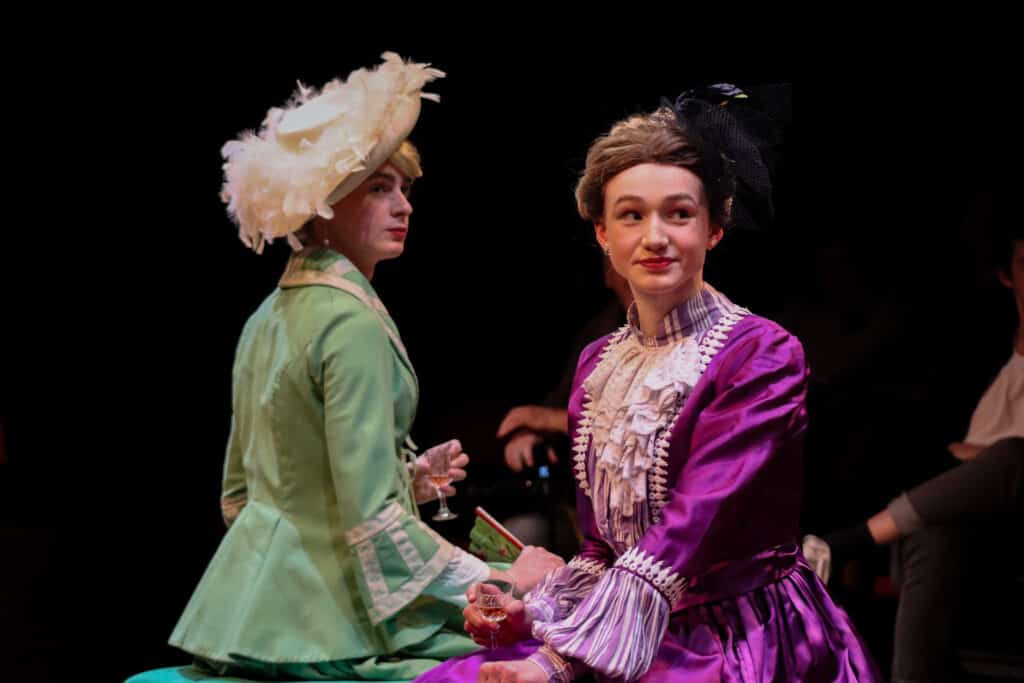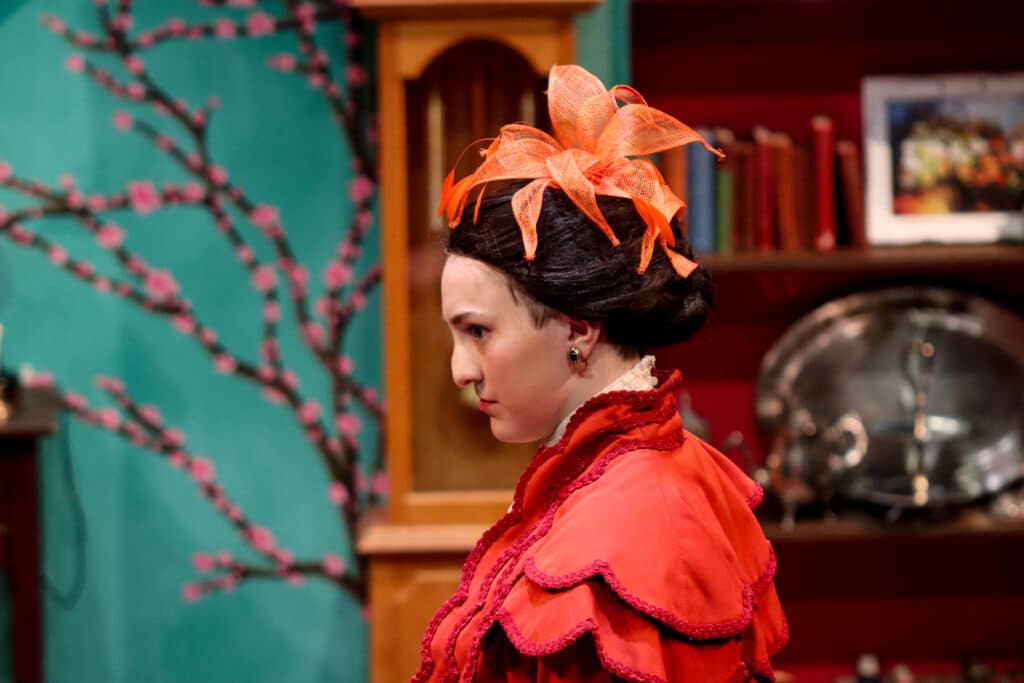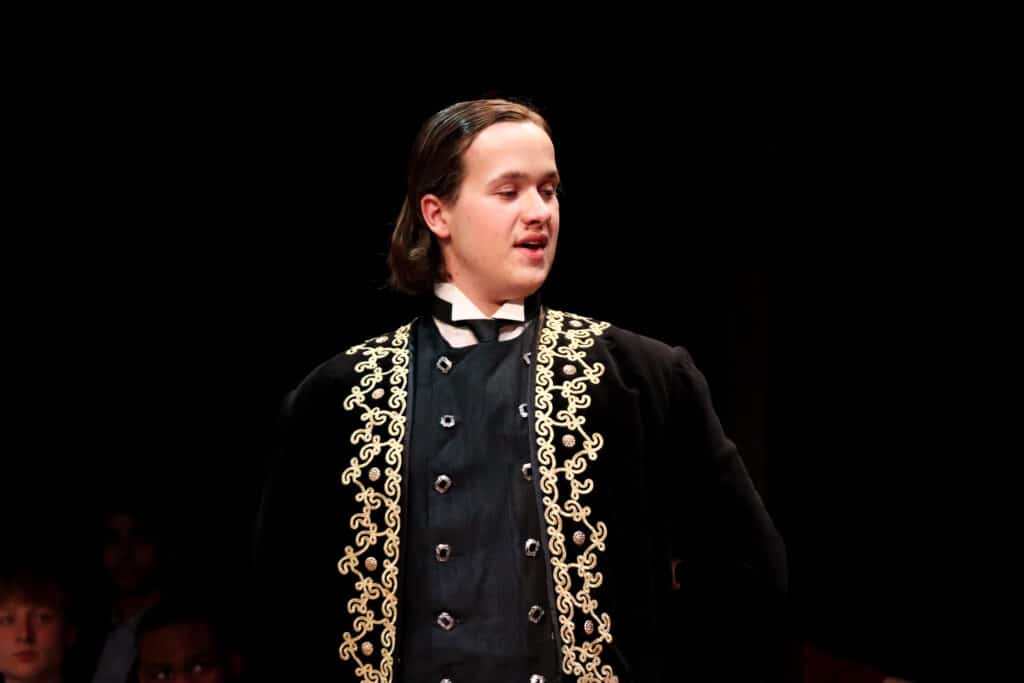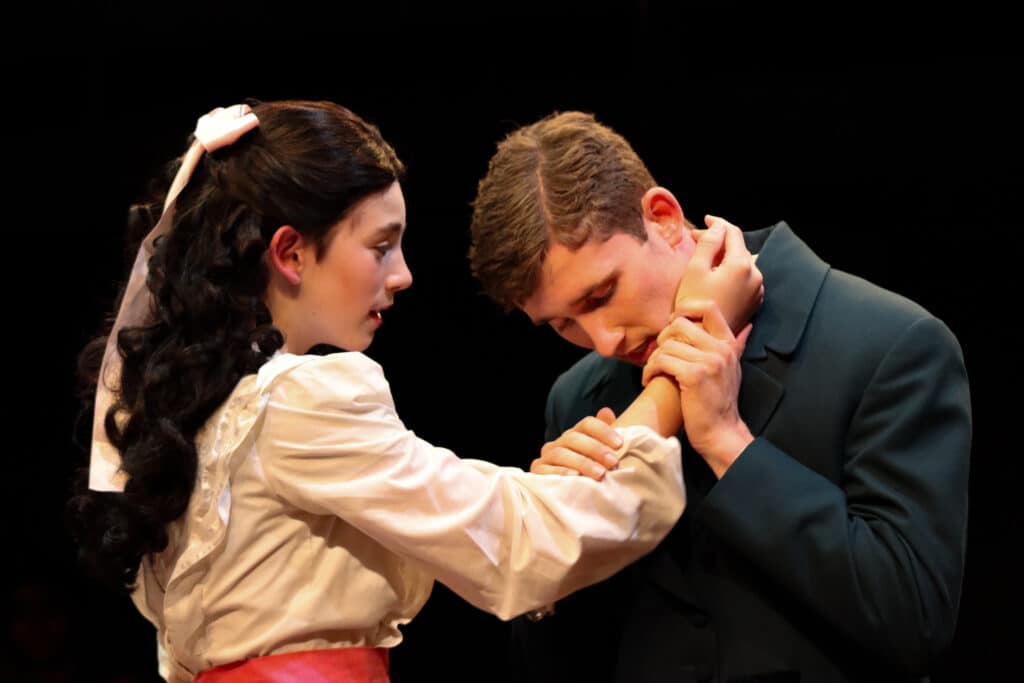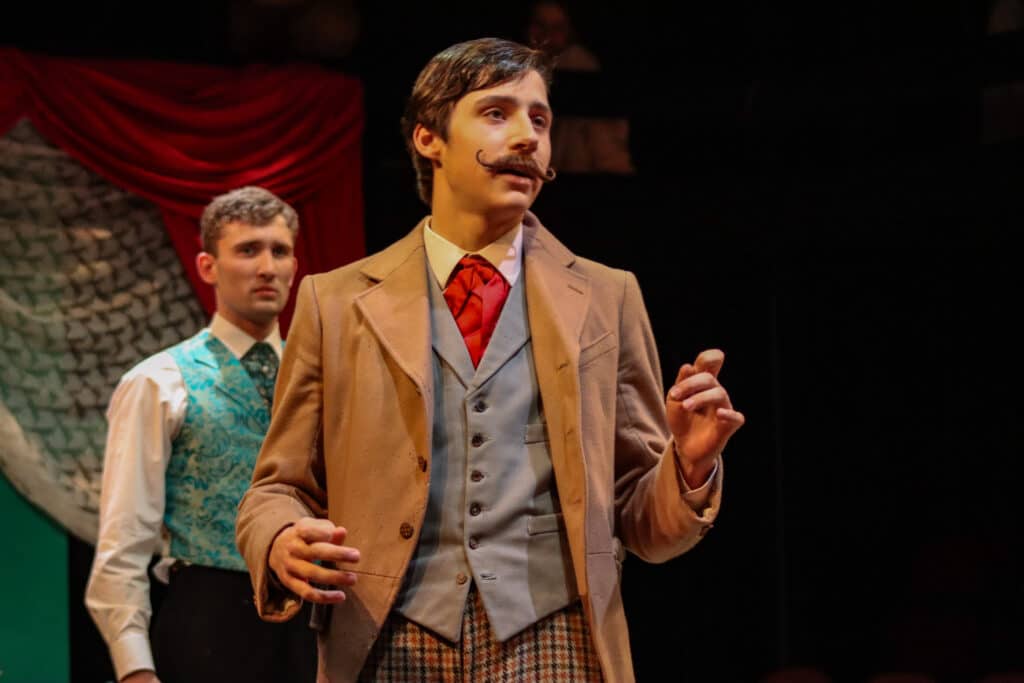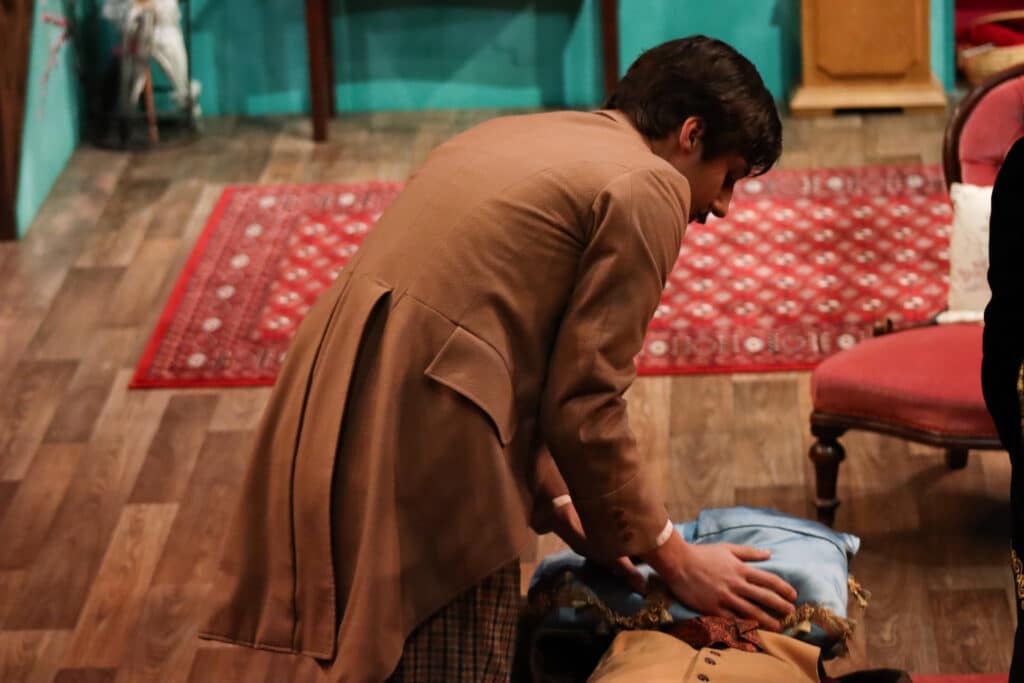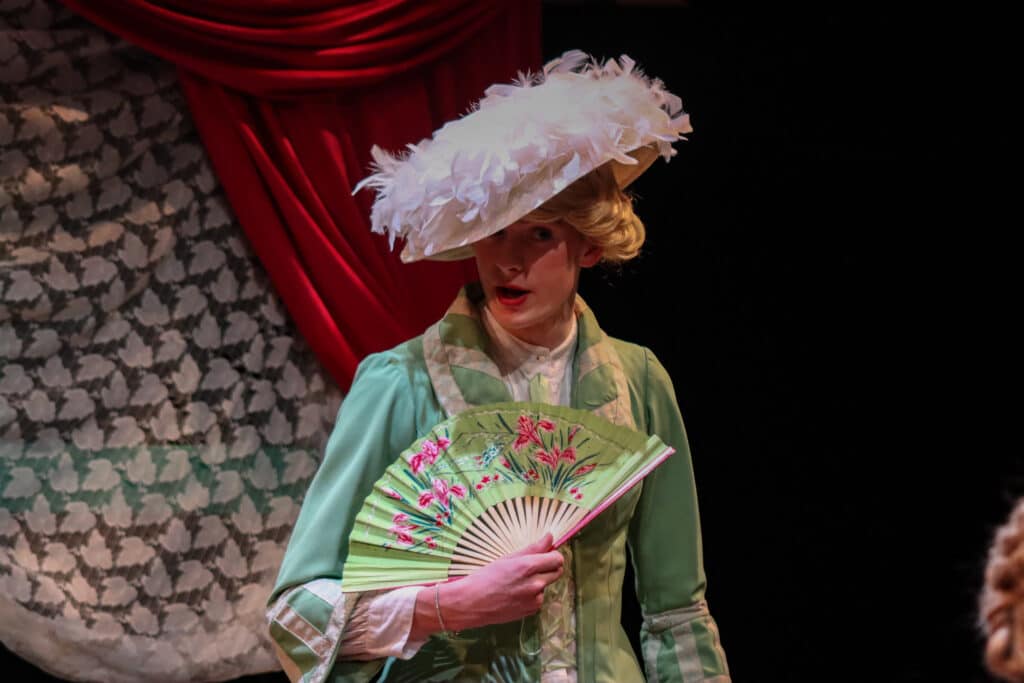From Thursday 6 March – Saturday 8 March, Holland House (DWBA) delivered a masterpiece, adapting Oscar Wilde’s short story into a tremendous play of exceptional quality. Lord Arthur Savile’s Crime featured a cast of seventeen and five directors from the boarding House. Such an outstanding performance is testament to the hard work of all involved.
Performed in the snug and cosy Caccia Studio, the actors were within a metre of the audience, allowing everyone in the room to be fully immersed in the world of the two-hour show. Set in the nineteenth century, the attire and choice of vocabulary were more than fitting, with the actors making full use of the limited space they had. The set, beautifully designed with colourful lanterns hanging from the ceiling, alongside paintings and silverware highly reminiscent of the period, transported the audience to the early Victorian era.
The play commenced softly, possessing the portrayal of aristocratic British life being overly relaxed and stress-free. With the main character Lord Arthur Savile —played by Leonardo O’S —anxiously awaiting his marriage to his fiancée, Sybil Merton, played by Rex W. With seemingly nothing to disrupt their uneventful love journey, the plot takes a twist when a supposed palm-reader with the comical name of Podgers claims to foresee Lord Arthur committing a single murder at some point in his life. Eager to prevent shame being cast on his heritage, Lord Arthur attempts to commit murder before his wedding—but only in a way that keeps him out of the public limelight.
Lord Arthur brainstorms with his butler, Baines—played by Julian OT—on whom he should target and how. Beginning with his aging great-aunt Clementina, Lord Arthur makes multiple attempts to poison her, but to no avail, instead poisoning himself in the process. His second target is his uncle, The Dean of Paddington, but this attempt also ends unsuccessfully. His third and final target becomes Podgers himself. Through this rather gruesome ordeal, comedy is woven throughout: the introduction of two German anarchists into the storyline was particularly memorable. Purveyors of disguised weapons, these two individuals left a lasting impression on the audience, with laughter echoing throughout their time on stage.
After seemingly killed Podgers, the elated Lord Arthur receives news that Podgers, in fact, killed himself in his own home and that he was, indeed, a fraud. With all of his predictions supposedly false, the ‘cheiromantist’ ended his life to avoid public disgrace. The gleeful Lord Arthur—now ashamed of his gullibility—doesn’t know what to do or how to think or how to react, so he rushes to deliver the good news to his fiancée. What happens next is unknown: one can only assume the couple lived on happily ever after, but the play most certainly reminded many not to believe the first thing they are told.
Many thanks must go to the members of Holland House for this spectacular performance, as well as to the Directors, Ms Allott and Mr Houston, and House Master, Mr Anderson for making it possible. House plays are one of the aspects of Eton College which make this school unique, and this particular play demonstrated the power of camaraderie and the potential of unified determination.

